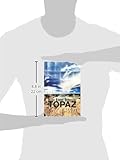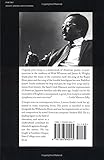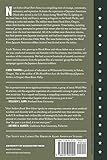In his debut collection of poems Topaz, Brian Komei Dempster writes: “I feel war’s incision.” These poems cut open the past line by line, breaking the cultural legacy of silence. Here, the wound opens in Topaz, a Utah relocation camp for Japanese Americans during WWII. As a home that is not a home, Topaz is the central gathering place of these poems. Yet this is far from a gathering place of ghosts; Dempster’s poems seek to bring together the fractured stories of the past and the present – in order to see what’s to come.
As he writes in his notes, Dempster reaches out to a community of Asian American poets, including David Mura, Timothy Liu, and Garret Hongo to name a few. As such, these poems also become acts of dedication and reflection. It is almost impossible to read Topaz without considering the legacy of poetry about the Japanese internment, most notably Lawson Fusao Inada’s Legends from Camp (1993). Inada maps the internment onto the American landscape, imprinting a history largely ignored. In “Concentration Constellation,” Inada draws together a collective experience of the internment’s wound: “a jagged scar/massive, on the massive landscape./It lies there like a rusted wire/of a twisted and remembered fence.” The massiveness of this experience draws attention to the internment camps’ legacy of silence. While we may see the scar, we turn away.
Ten years after Inada, Dempster opens up this scar not as an act of violence but as an act of dedication. The result is a deeply personal – and hopeful – constellation of poems in which he pieces together his identity in relation to generations past. This history is both scarred and beautiful; under the light of Topaz, we are met with “quartzed asphalt” and “gemstones/strewn in the wasteland.”
Throughout, Dempster creates physical connections to the past; here, memory lies in objects. To feel “war’s incision” is to touch war’s things. \ We have “the cold globes of his breath a string of prayer breads” and more: steamer-trunk cribs, cameras, radios, the numbered tags on a coat. Dempster even quantifies these objects: “1,458 radios, 2,014 cameras.” Most notably, these objects are highly detailed and personal. For instance, in the poem “Sickness,” we are immersed in the detail of his mother’s emergency:
“That day I left my uncle Kibi, his lungs flushed in a barium rush,
I plunged my mother in ice. Derek and I rubbed
nine-volt batteries over our tongues and screwed the caps
off Mickey’s…
105 my mother bloating like a jellyfish,
106 the click of Derek’s ignition, a string of red driving to Emergency.”
This focus on the personal particularity of objects is in contrast to poems such as “My Wife Grace Reflects on Her Great Aunt’s Jade,” which seems to generalize experience through familiar markers. Here, we miss the intensity of individual experience. For instance: “your kitchen was fragrant/with black bean and garlic,/the sweetness/of rice wine/on your husband’s breath.” These moments of distance feel less immediate than moments where readers see Dempster, notably raising the “I” to bring us closer:
“Where is the key to unlock this box?
A bomb shelter my father calls it. Night after night
I climb under the covers while he descends
beneath the house, the tip of his shovel ticking
against the earth like a metronome.”
Unlike the sweetness of rice wine, the metronome of the shovel calls us into Dempster’s world – a world where we can thread together that which is fractured.
As a poet, Dempster’s work is clearly charged with personal grief; the page reverberates with devotion and dedication to the past. Yet there lacks a discussion of history’s burden; instead, the focus is on bringing the past forward into the light. This kind of dedication is quite different from Asian American poets interested in the act of writing as literal fracture. Works such as Theresa Hak Kyung Cha’s Dictée demonstrates the burden of history through formal fracture and uneasiness, evident in her use of staccato lines and interruptions of images, etc. Topaz, on the other hand, focuses more on the concerns of content, leaving the form arguably neat and organized. Returning to the idea of suturing, this “neatness” in form embodies the hope for wholeness. Many of the poems have lines that literally weave together through rhythmic and organized indentation. From “Topaz”:
“I am the prism
refracting
your prison”
Continuing against formal fracture, these poems are highly narrative and read like prose. Yet the most engaging poems in the collection are ones that move beyond couplets and modes of organization such as sentence clarity. These more distilled moments place us in a haunting world without detail. From “Noriko’s Fragments”:
“I hid the silver paper.
Mama says
Stay far
from the fence”
As Dempster attempts to thread together collective, familial, and individual history, questions arise. For instance, how can one simultaneously write about the stories of others and about one’s self? How can one reimagine a past fraught with the facts of trauma? The tonal range of these poems demonstrates how troubling and fruitful these questions are, as Dempster’s poet-self meets his collector-self. Indeed, prior to this collection, he has edited anthologies of stories about the internment, including Making Home from War: Stories of Japanese American Exile and Resettlement. He also runs an online collective project, Collecting Nisei Stories, which encourages former camp prisoners to tell their stories of incarceration and post-war resettlement. As a creative extension of these projects, Topaz represents Dempster’s brave and deeply personal attempt to both tell and collect the stories that make him who he is.
Jane Wong lives in Seattle, where she is a Ph.D. candidate in English at the University of Washington. A former U.S. Fulbright Fellow, she holds an M.F.A. from the University of Iowa. Her poems have appeared in journals such as Mid-American Review, CutBank, Octopus, and in the anthologies Best New Poets 2012 and The Arcadia Project: North American Postmodern Pastoral.




